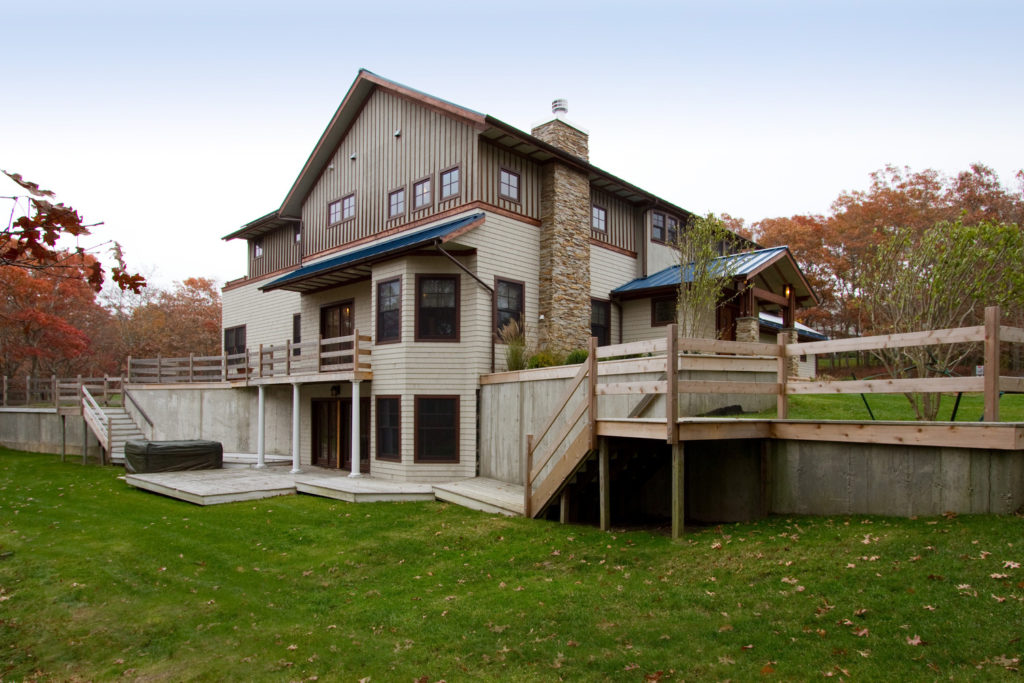How the HGA House Became ICEMAN
The HGA House built by the Hamptons Green Alliance with the goals of being LEED Platinum, net-zero energy, and carbon-neutral was a significant achievement in and of itself. The methodology we created to measure the carbon footprint of the construction phase of the building has now become the framework for an industry-wide methodology.
But the work we did on the HGA House has implications far beyond the construction industry. In the process of applying the scientific protocols to measure the carbon footprint of the construction phase of the house, and ultimately creating a carbon-neutral building, I realized that we were onto something big.
After all, construction is essentially the same as manufacturing. It is the creation of a product—a building—from raw materials. So, if a methodology for measuring carbon footprints works for the construction phase of a building, it will also work for the manufacturing process for any product. This methodology could in fact be used for every single product that is manufactured.
And if we could accurately measure the carbon footprint of the manufacturing of a product, from the raw materials through the finished product, then we might actually be able to reduce the carbon footprint of that manufacturing process. If we could do this, it would have a huge impact on the environment. This methodology could revolutionize manufacturing—and the entire global fight against climate change.
When I realized this, I knew I had to figure out a way to bring this methodology not just to the construction industry, but to all industries. In a eureka-like moment, I perceived, all at once, that what we did with the HGA House could be applied to anything. I perceived ICEMAN, in its entirety, beginning to end. I sat down at my home computer to write up an executive summary of this idea: mathematically converting carbon neutrality data into an objective indexing system, easy for consumers to understand.
I started writing and didn’t stop until I had the whole concept down on paper. I barely left my desk; I didn’t sleep. This was a completely new concept, a completely new ideology. I had to invent and define new terms. It was all new, but I knew it would be scientifically solid because our partnership with Verus would ensure that the calculations integrated into the ICEMAN mechanism maintain the well-established and accepted standards for the accounting of greenhouse gas emissions developed by the World Resources Institute known as the Greenhouse Gas Protocol.
I wrote straight through from Saturday morning until Sunday evening. And on Monday morning, I sent it to my corporate attorney.
As soon as my attorney read it, he immediately called me. He was completely blown away. “Frank,” he said, “This is really important. It could be massively impactful, and it’s something brand new. We have to protect it.”
When you invent a product, you can apply for a patent to protect your ownership of that product. But a methodology is not an object. You can’t draw a diagram of it and get a patent for it. To protect a methodology, idea, or concept, you get something called a service mark. With a referral from my corporate attorney, I went to an intellectual property attorney firm in Washington, D.C. They filed an application for the service marks for the ICEMAN methodology and for all the new terms I invented in my executive summary.
ICEMAN very quickly made its way through the approval process to receive the service marks. Part of the process involves using the idea for a period of time to prove its marketability, which I did. Once I completed that part of the process, the service marks were determined to be “indisputable.” This means ICEMAN is certified as a completely original concept. We filed these service marks with the U.S. Patent and Trademark Office, as well as with the European Union and Norway.
Not long after the service marks were certified, I met a scientist at a green industry event who had degrees in applied physics, nuclear engineering, and mathematics. We got to talking, and I asked if he would like to go out to lunch to talk more about ICEMAN. Before we met for lunch, I sent him a copy of the executive summary of ICEMAN.
The scientist was so excited that we barely sat down at the table before he gave me his assessment: ICEMAN was as significant a concept as the bar code.
I couldn’t believe my ears. “Really?” I asked.
“Yes,” he confirmed. “I believe it really is that important and impactful.”
This scientist introduced me to several of his colleagues who are research scientists and professors at Stony Brook University. The Stony Brook scientists took me under their wing, giving me credibility in the often very exclusive academic world. I was invited to speak about the HGA House and the methodology we’d developed at the Advanced Energy Conference in New York City, hosted by the Advanced Energy Research and Technology Center at Stony Brook.
In the audience for my speech was the editor of the American Institute of Physics Journal of Renewable and Sustainable Energy. After the conference, he sent me an invitation to submit a scholarly paper to the journal on the HGA House, including my application of the WRI Greenhouse Gas Protocol to measure the carbon footprint of the construction process. Once that paper was peer-reviewed and published, I received an invitation to join the Society of Physical Scientists, along with invitations to speak at institutions and events around the world. Scientists, experts, and consultants, all at the top of their field in their industries, reviewed my methodology and agreed with what I found.
All of this recognition reinforced what I realized the weekend I conceived ICEMAN: that the methodology we had created for a single project—building one local carbon-neutral house—had become an idea that could change the whole world.
Learn more about the founding of the HGA House.
